"The Curse" by Amadeo Modigliani
The memory of the Italian artist Amadeo Modigliani is imprinted in his strange nickname Modi (from the French maudit — "damned"), both diminutive and prophetic. All that Modigliani was awarded after his tragic death, he lacked so much during his lifetime: success, fame, critical acclaim.
Let's try to tell the story of the artist, keeping in mind, however, that the last page of his biography was closed by a tragic and early death.


Amadeo Modigliani was born in the Italian city of Livorno in 1884. A memorial plaque now hangs on the house that once belonged to the Modigliani family. An important role in Amadeo's life was played by his mother Eugenia Garsen. She recalls that her son first voiced his desire to become an artist at the age of 14, being on the verge of life and death, in a dangerous attack of typhoid fever: "And suddenly — a subconscious desire expressed in delirium. Never before had he talked about what might have seemed like an impossible dream to him." (In the photo — the mother of the artist Evgenia Garsen.)A serious illness was the impetus for the awakening of a wonderful artistic gift. Evgenia promised her son to invite an art teacher as soon as he recovers. And strangely, the patient began to recover very quickly. "He does nothing but paint with an extraordinary fervor that surprises and delights me… His teacher is very pleased with him," Evgenia writes a few months after Amadeo started taking painting lessons.
The material was prepared with the support of the Center for the Promotion and Development of Creativity of People Suffering from Mental Disorders, Daria Evseeva.

Amadeo Modigliani was born in the Italian city of Livorno in 1884. A memorial plaque now hangs on the house that once belonged to the Modigliani family.

An important role in Amadeo's life was played by his mother Eugenia Garsen. She recalls that her son first voiced his desire to become an artist at the age of 14, being on the verge of life and death, in a dangerous attack of typhoid fever: "And suddenly — a subconscious desire expressed in delirium. Never before had he talked about what might have seemed like an impossible dream to him." (In the photo — the mother of the artist Evgenia Garsen.)

A serious illness was the impetus for the awakening of a wonderful artistic gift. Evgenia promised her son to invite an art teacher as soon as he recovers. And strangely, the patient began to recover very quickly.
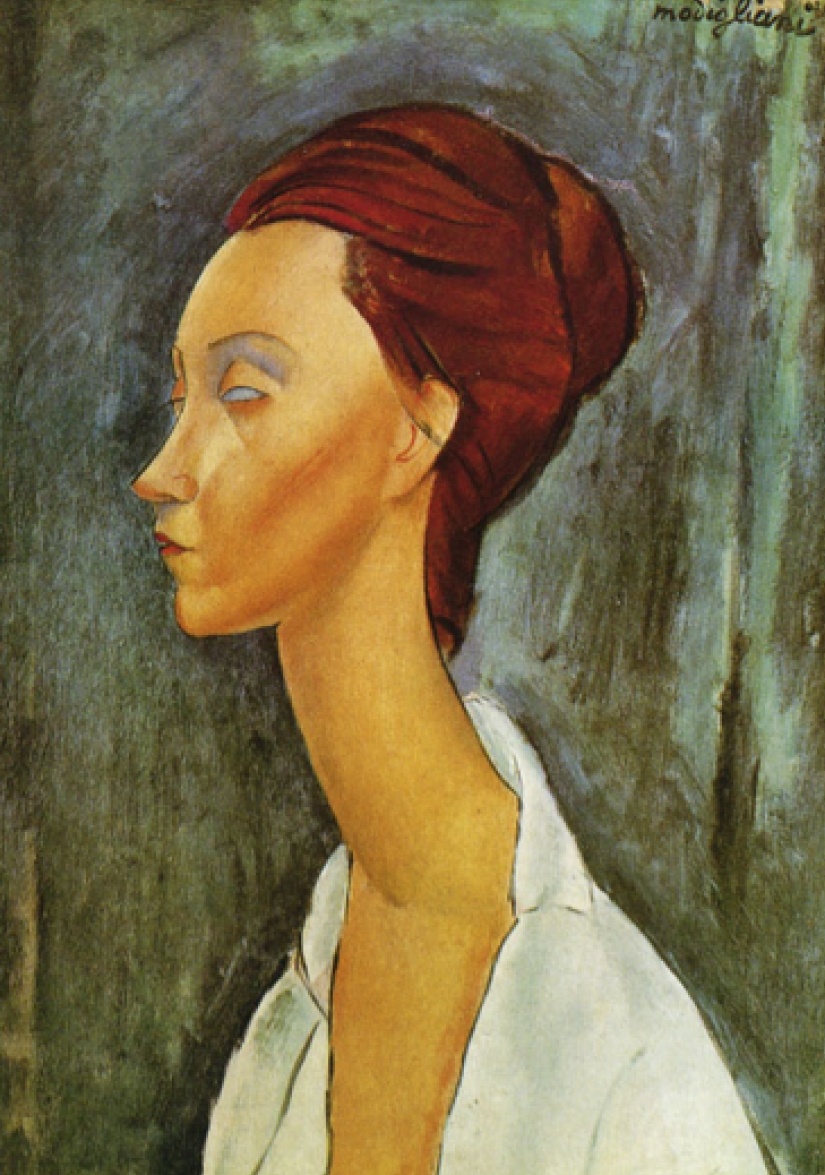
"He does nothing but paint with an extraordinary fervor that surprises and delights me… His teacher is very pleased with him," Evgenia writes a few months after Amadeo started taking painting lessons.

At the age of 17, Amadeo Modigliani enrolled in the "Free Academy of Nude Painting" in Florence. For the well-meaning inhabitants of that era, the academy seemed to be a haven of laziness and idleness, but the future artist cared little about the opinions of others. (Pictured is a view of the Cathedral of Santa Maria del Fiore, Florence.)
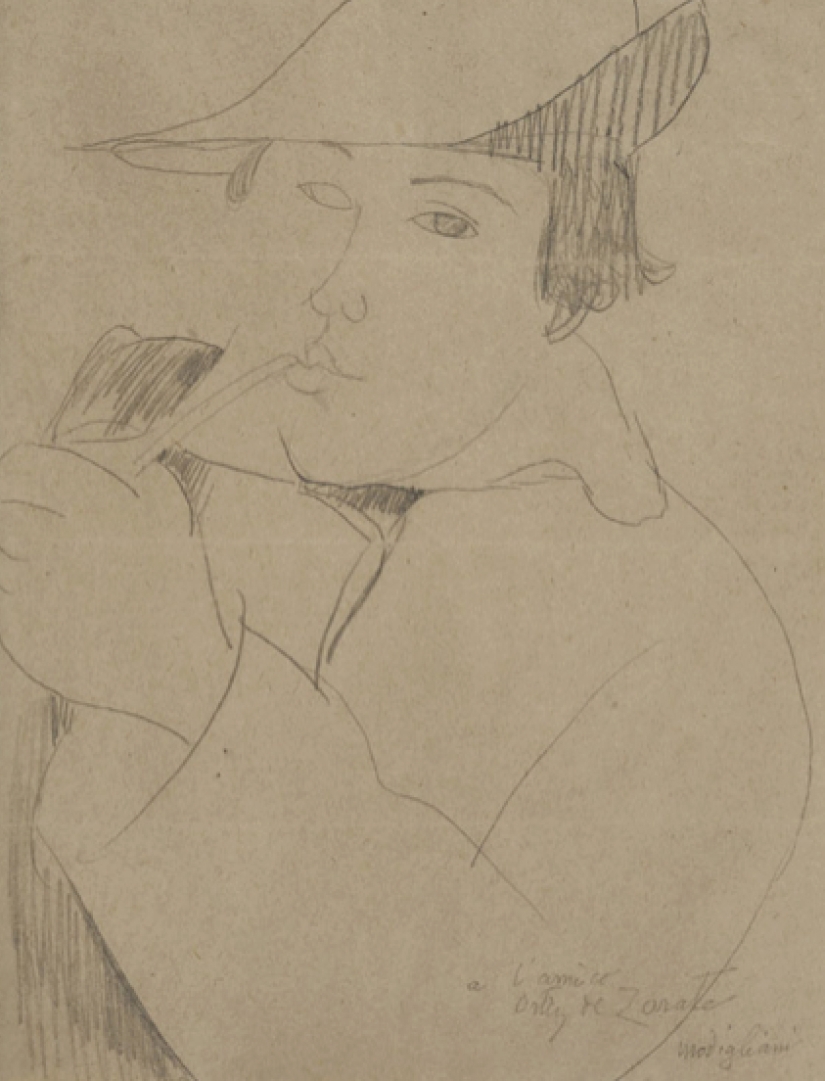
A year later , Modi goes to Venice, where he continues his painting studies. Here he meets the Chilean artist Manuel Ortiz de Zarate, who remained among Amadeo's loyal friends until the last day. (Pictured is a pencil portrait of Manuel Ortiz de Zarate, made by Amadeo Modigliani.)

Before coming to Venice, Manuel lived for a long time in Paris. It was he who told Amadeo about the temptations of the French capital, about the extraordinary freedom of society there, the atmosphere of Montmartre, new artistic trends, the graceful grace of the streets, the comfort of cafes and the illusory lightness of Parisian existence.

Amadeo Modigliani left for Paris on a cool January day in 1906. This journey was painful and contradictory for him: on the one hand — a sweet moment of fulfillment of desire, and on the other — a feeling of breaking and parting with the past.

Modi spoke French perfectly, a language his mother had taught him as a child. He was dressed with elegance, perhaps even somewhat pompous and clearly dissonant with the image of the artist. Amadeo voted, calling a fiacre, loaded his luggage and gave the address of the hotel in the very center. At first, he wore a chic black suit, carefully fitted to the figure, under the jacket — a white shirt and tie. The outfit was completed by a walking stick, which constantly interfered, Modigliani awkwardly twirled it in his hands or carried it under his arm.
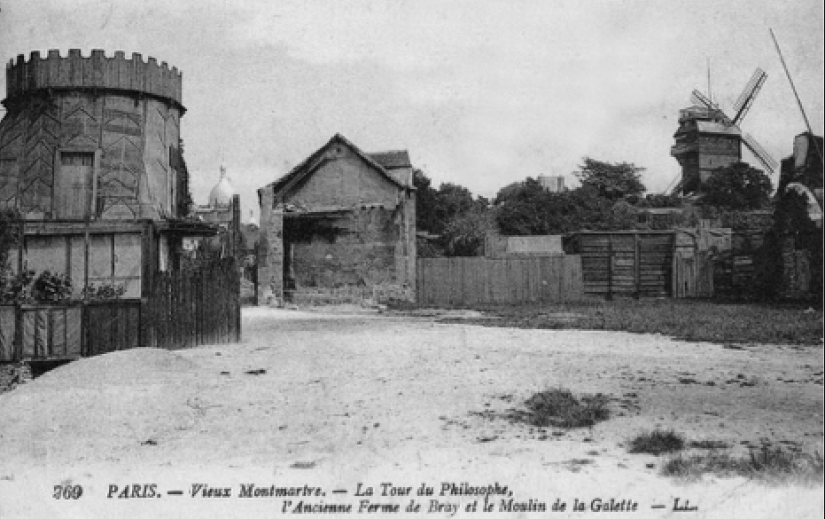
During the first two weeks of your stay in In Paris, Modigliani constantly changed hotels, moving from place to place (which seems to have been a sign of deep concern), until he finally settled on Montmartre Hill, a famous habitat of artists. The hill was green with vegetable gardens and vineyards and gray with barracks and windmills, a rustic way of life reigned here. (Pictured is Montmartre, 1907.)

If the statement is true that "you really only own the money that you spend," then Modigliani was a rich man even in poverty. He immediately blew everything he had to the wind. Such a thoughtless waste of funds gave rise to rumors about his prosperity, but these conversations quickly came to naught. The supposed wealth turned out to be only a small savings of his mother.

As was the custom of that time, almost all the artists of Montmartre were in a state of poverty. They led a chaotic and chaotic life, but Amadeo stood out even against their background: he constantly got into trouble and scrapes, and his figure began to acquire a halo of legends during his lifetime. In a few months of Parisian life, Modigliani turned from a modest young man into one of the most famous alcoholics of Montmartre.

They told, for example, how one evening Modigliani appeared drunk in the cabaret "Nimble Rabbit" (one of the favorite gathering places of the artistic bohemians of that time) and provoked a general fight, during which the dishes were shattered. From that moment on, the owner of the establishment no longer let Modi on the threshold. (The photo shows the cabaret "Agile Rabbit".)

The manner of drinking Amadeo Modigliani denied any ritual, he drank hastily, in large sips, not feeling any pleasure from what he drank. In a short time he became addicted to absinthe. It seems that alcohol helped the artist overcome his natural shyness, which the intoxicated Amadeo tried to hide under the mask of a cheeky impudent.

Mutual addiction to alcohol and joint drinking contributed to the establishment of a trusting relationship between Amadeo Modigliani and his artist friend Maurice Utrillo. "It was sad to see them embracing in some kind of unstable balance, one barely standing on his feet, the other is also about to somersault," recalled art critic Andre Varno. Picasso once remarked dryly at the sight of two friends: "Next to Utrillo, Modigliani is already drunk." (Pictured is Maurice Utrillo.)

At the end of 1907, Amadeo Modigliani met his first real philanthropist, Paul Alexander, a young doctor who was only three years older than him. Paul made the artist feel that he appreciated his talent, calmed down, mitigated the negative consequences of many of his antics, helped a lot by providing Modigliani with a room for work, bought paintings and drawings, negotiated with models. (In the photo is a portrait of Paul Alexander by Amadeo Modigliani.)

With the outbreak of the First World War, life in Paris changed, many artists did not stay away from the general mobilization. Amadeo Modigliani, who proclaimed himself a socialist and an opponent of the war, longed to get to the front, but was rejected by a military medic who refused to recognize him fit for service because of poor health. Modigliani's Italian pride was hurt, and he reacted in his usual manner — he began to consume even more alcohol and hashish. (Pictured is Paris, 1915.)

Modigliani understood that the feeling he most often inspired in people was at best compassion, and at worst rejection and dislike, but he could not help himself. The people around him were already so used to his image of a drunkard, barely able to stand on his feet and ready to trade his drawings in exchange for a glass of wine, that Amadeo did so, demonstrating what is called "expected behavior" in psychology.

In February 1917, Modigliani met Jeanne Ebutern, a woman who shared his fate for a short time, remaining close to the end. The artist at that time was thirty—three years old, Jeanne was nineteen. (In the photo — Jeanne Ebutern.)
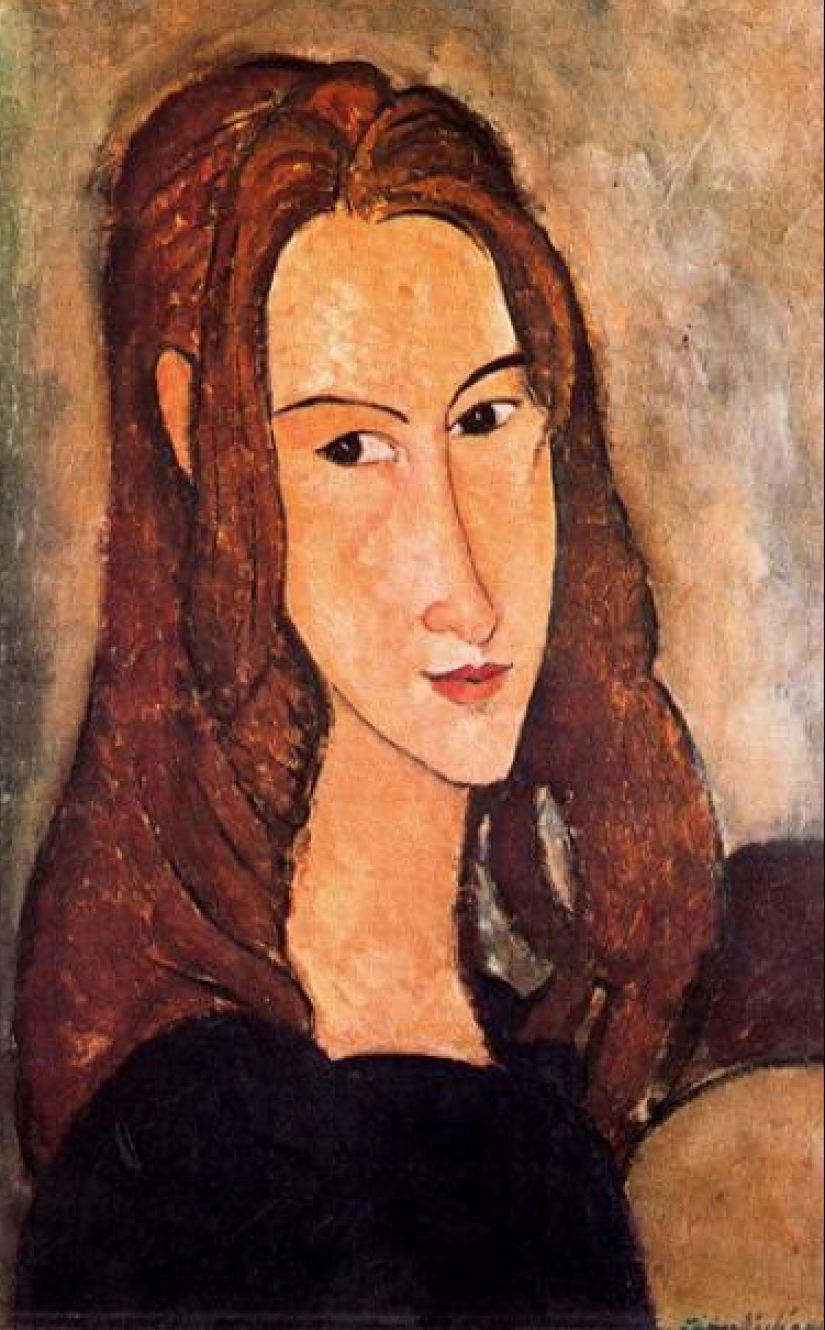
Some light on the nature of the relationship between Jeanne and Amadeo is shed by the memoirs of contemporaries: "Drunk, he sits on a bench, not knowing what to do, where to go. Jeanne appears from the Boulevard Montparnasse. She is wearing a coat and a warm scarf in her hands. After looking around anxiously, she finally noticed him, sat down next to him and tied a scarf around his neck — after all, he has a cough and a high fever. Maudie is silent, putting her arm around her shoulders, and they freeze in this position for a long time, clinging to each other and not saying a word. Then, still hugging, they go home together." (In the photo is a portrait of Jeanne Ebutern by Amadeo Modigliani.)

Leopold Zborowski, who was at that time a patron of Amadeo Modigliani, was very pleased with the appearance of Jeanne in Modi's life and hoped that she would have a positive influence on him, make him take care of his health and give up bad habits. This hope, however, proved futile. (Pictured is a portrait of Leopold Zborowski by Amadeo Modigliani.)

In the late autumn of 1917, the owner of the prestigious gallery Bertha Weil announced that she would organize Modigliani's first solo exhibition. Wanting to attract visitors, Leopold Zborowski put a couple of nudes on display, which gave an instant effect that exceeded the wildest expectations of the patron. A lot of people crowded around the window, indignant shouts were heard, someone with greasy jokes began to comment on what they saw.

The gallery where this first solo exhibition of Modigliani took place was very unsuccessfully located near the police station. The commotion that arose attracted the attention of the commissioner, who sent to see what was going on, and as a result of this raid ordered the owner of the gallery to immediately close the exhibition.

This first and last lifetime exhibition of Modigliani nevertheless served Amadeo well. The scandal that accompanied its closure became widely known in Paris, and the artist's name was on everyone's lips. The war years did not contribute to the development of the art market, so such involuntary advertising did its job — Modigliani paintings began to be bought.
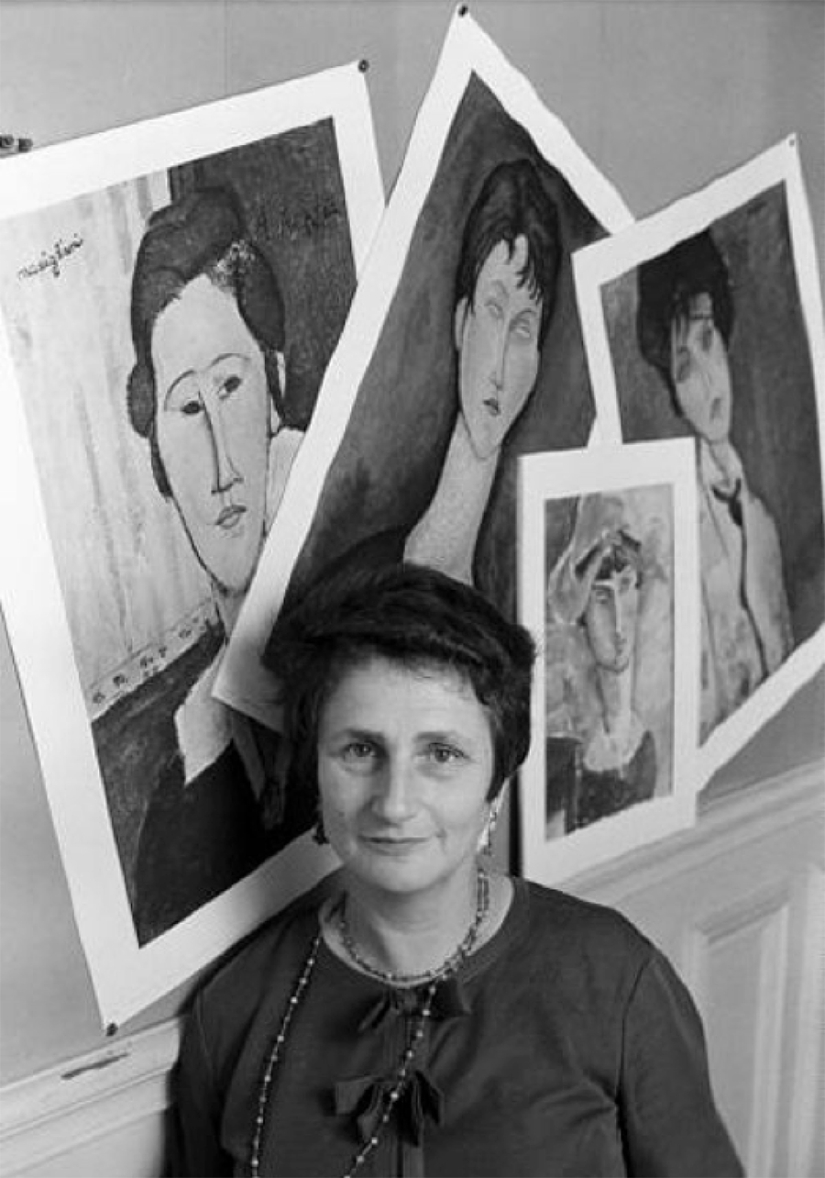
On November 29, 1918, Jeanne Ebutern gave birth to a daughter, she, like her mother, was named Jeanne. Amadeo was so happy that, after leaving the hospital, he told everyone who got in his way about the newborn. Then I decided to celebrate this event in a bistro, and when I came to the office to register the birth of a girl, her doors were closed. (Pictured is Jeanne, daughter of Amadeo Modigliani.)

So, the last act of the drama. On January 1, 1920, Leopold Zborowski, concerned about Modigliani's health, locked him at home so that he would stay in bed. The artist loudly demanded to be released and eventually ran down the fire escape. But it had to happen that Maurice Utrillo, released from a psychiatric hospital, came across Modigliani. Joy, hugs, a stormy feast, which began in a bistro, and continued at Amadeo's house, where meanwhile Jeanne, pregnant with her second child, came.

The next day, Modigliani drank again and wandered through the cold, deserted streets until late at night. A group of friends persuaded Amadeo to return home to Jeanne, but he did not want to listen to anything, and then began to insult others, cursed, shouted that he had no friends and never had. Then he suddenly sat down on an ice bench and invited everyone to follow his example. Modi then dreamed of a pier in the port of Livorno. The exhausted artist was delirious.

Recently , the Modigliani became increasingly delusional: in his delirium, he talked with imaginary people, and saw Chinese dragons in lighted cars speeding along the boulevard.

On that fateful night, Modigliani returned home by taxi and came down with symptoms of pneumonia, the highest fever was accompanied by continuous delirium. On January 22, 1920, Amadeo was taken to the hospital for the poor and indigent in an unconscious state, where he died on the evening of January 24. Friends recall that the artist's last words were: "I have enough intelligence to understand that this is the end." Then he added: "I kissed my wife, we are ready for eternal happiness."

On January 25, accompanied by her father, Jeanne Ebutern came to the hospital to say goodbye to Modigliani, and that night she committed suicide by stepping out of the bedroom window in her parents' house. Jeanne was nine months pregnant.

While Amadeo's funeral was very solemn, the same cannot be said about Jeanne's burial. In vain friends tried to convince the girl's parents to bury young people in the same grave. This proposal was completely rejected by the Ebutern spouses.

However, just two years later, Jeanne's remains were moved to Modi's grave at the Pere Lachaise cemetery in Paris. The tombstone keeps the last entry in the book of their lives, made in Italian: "Amadeo Modigliani. Artist. Born in Livorno on July 12, 1884. He died in Paris on January 24, 1920. Death overtook him on the threshold of glory.Jeanne Ebutern. Born in Paris on April 6, 1898. She died in Paris on January 25, 1920. The faithful companion of Amadeo Modigliani, who sacrificed her life to him."
Recent articles

Most of us think that the color of the eggshell does not play any role and it is possible not to pay attention. But it's not and ...

The more we rely on technology, the more potential power hackers gain over us. It doesn't matter if their goal is to help or cause ...

Creating a good portrait is one of the most difficult tasks for any photographer. In order to make a really natural and memorable ...